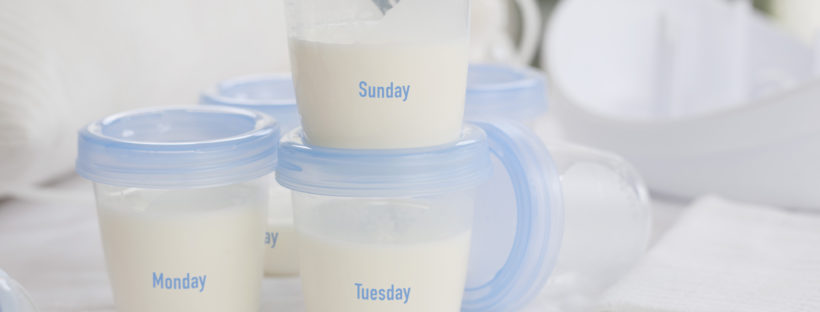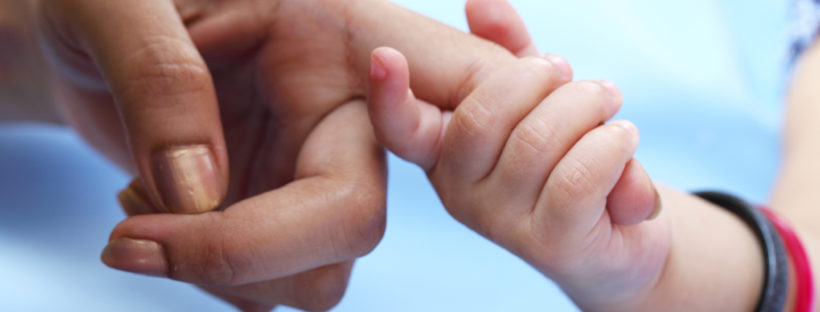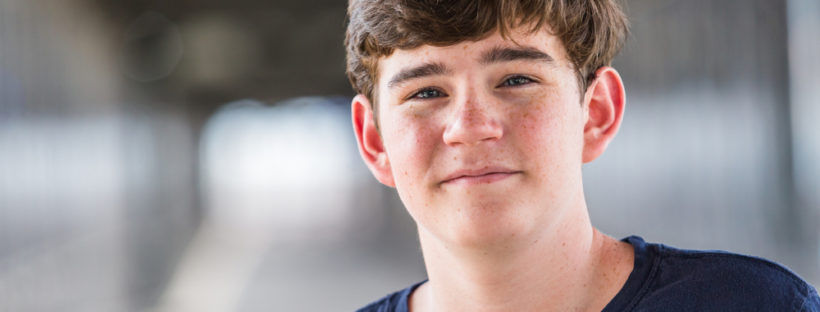by, Diane L. Spatz, PhD, RN-BC, FAAN
Susan is a nurse in a Neonatal Intensive Care Unit (NICU) with a strong human milk culture. Every day she provides evidence-based lactation care and support to mothers who have critically ill infants. She understands fully that human milk can be a lifesaving medical intervention and received two days of on the job education regarding the critical importance of human milk and breastfeeding. Seeped in this culture, Susan also believes that nurses and health professionals have an obligation to help families make an informed decision and while it would be ideal if all infants were exclusively breastfed by their own mothers, this is not always feasible or possible.
Susan is also challenged personally Having experienced infertility for 10 years, she has decided to adopt a newborn. She has read the literature and met with a lactation expert . Susan is aware that even with great effort and time investment, she may never achieve a full milk supply. She is very concerned about giving her infant formula and asked the lactation expert about accessing Pasteurized Donor Human Milk (PDHM).
The Human Milk Banking Association of North America (HMBANA) is the organization that oversees non-profit milk banks in the United States. Even though the number of HMBANA milk banks is increasing in the United States and the amount of PDHM has also increased substantially in recent years, PDHM is still prioritized to preterm or vulnerable infants in the hospital setting. HMBANA milk banks do sometimes dispense PDHM to the community setting. However, in these instances, it is for infants with special medical needs and usually requires a prescription from a health care provider.
So for Susan who is planning to adopt a healthy full-term infant, she will likely be unable to access PDHM. Susan is considering informal milk sharing in order to supplement what milk she is able to produce through inducing lactation. It is important for nurses and other health professionals to be aware that informal milk sharing does exist and also to help families make an informed decision.
There are many reasons why women or families choose to pursue informal milk sharing in addition to the reasons in Susan’s story, including:
- Women who have glandular hypoplasia or breast surgery and are unable to develop a full milk supply
- Men and women who adopt children and may be unable to induce lactation
- Women who have had bilateral mastectomy prior to childbearing
- When a woman dies in childbirth and her family members wish to honor her plans to breastfeed
- A short term need for supplemental human milk due to early breastfeeding challenges or a delay in Lactogenesis II
Although very beneficial in all of the above cases, informal milk sharing is not without any risk because just as antibodies, white blood cells, and other immune components are transferred in human milk, viruses can also be transferred. In addition, some medications transfer into human milk (most in very small amounts, but some in larger).
Mothers who are considering informal milk sharing should consider the following steps:
- Get a complete health history from the donor mother. It is essential to understand the donor mother’s past and current medical history as well as lifestyle choices is essential. It is also acceptable for the mother to ask the donor mother for a copy of her serologic testing from pregnancy.
- Find out how the milk will be expressed, labeled, stored, and transported. The donor mother, first and foremost, should have an excess supply of milk that she does not need for her infant. When mothers express milk, care should be taken to ensure the safety of the milk. At our institution, we have mothers wash their pump equipment with hot, soapy water and rinse well after every use and have them sterilize the equipment daily.
- What types of containers will be used for storage (the recipient mother could supply these to the donor mother) and how will the milk be stored (fresh or frozen) and transported from the donor mother to the recipient. Conversations between recipient mother and donor mother should be on-going to ensure safety of the milk. In this area the research literature has also evaluated the use of home heat treatment to “pasteurize” the milk. Research has shown that heat treatment of the milk on a stovetop is not the same as Holder pasteurization, this technique has the ability to destroy viruses. It is important to note that heat treatment also destroys some of the beneficial components of human milk.
Recently, the American Academy of Nursing published a position statement regarding the use of informally shared milk. This, along with resources shared below can be a starting point to have these conversations with families who are interested in the topic.
As health professionals, is also important to understand that there is a difference between milk sharing – mothers may share altruistically and be commerce free or there may be an exchange of money or mothers who are paid for the milk. When financial exchange enters the equation, mothers seeking to get paid for their milk may be motivated to dilute or alter their milk. We should advise parents to be alert and aware of this.
Until PDHM becomes universally available, if a family does not wish to feed their infant formula, the only other option available is informally shared milk. Having transparent and honest conversations with families to help the understand this practice is essential.
Resources for Informal Milk Sharing
The American Academy of Nursing (2016). Position statement regarding use of informally shared human milk. Nursing Outlook, 64, 98-102.
Martino, K., & Spatz, D. L. (2014). Informal milk sharing: What nurses need to know. The American Journal of Maternal/ Child Nursing, 39(6), 369-374. doi:10.1097/NMC.0000000000000077
Spatz, D.L. (2016.) Informal Milk Sharing. American Journal of Maternal Child Nursing;41(2):125. doi: 10.1097/NMC.0000000000000225. PubMed PMID: 26909729.
Wolfe-Roubatis, E. & Spatz, D. L. (2015). Transgender Men & Lactation: What nurses need to know. The American Journal of Maternal Child Nursing,40(1): 32-38. doi: 10.1097/NMC.0000000000000097.
Israel-Ballard, K., Donovan, R., Chantry, C., Coutsoudis, A., Sheppard, H., Sibeko, L., & Abrams, B. (2007). Flash-heat inactivation of HIV-1 in human milk: a potential method to reduce postnatal transmission in developing countries. Journal of Acquired Immune Deficiency Syndromes, 45(3), 318-323.
 Diane L. Spatz, PhD, RN-BC, FAAN is a Professor of Perinatal Nursing & the Helen M. Shearer Professor of Nutrition at the University of Pennsylvania School of Nursing sharing a joint appointment as a nurse researcher and director of the lactation program at the Children’s Hospital of Philadelphia (CHOP). Dr. Spatz is also the director of CHOP’s Mothers’ Milk Bank. Dr. Spatz is an active researcher, clinician, and educator who is internationally recognized for her work surrounding the use of human milk and breastfeeding particularly in vulnerable populations. Dr. Spatz has been PI or co-investigator on over 30 research grants, included several from the NIH. She has authored and co-authored over 80 peer reviewed publications. Dr. Spatz has authored or co-authored position statements for the International Lactation Consultant Association, the Association of Women’s Health Obstetric & Neonatal Nursing and the National Association of Neonatal Nurses.
Diane L. Spatz, PhD, RN-BC, FAAN is a Professor of Perinatal Nursing & the Helen M. Shearer Professor of Nutrition at the University of Pennsylvania School of Nursing sharing a joint appointment as a nurse researcher and director of the lactation program at the Children’s Hospital of Philadelphia (CHOP). Dr. Spatz is also the director of CHOP’s Mothers’ Milk Bank. Dr. Spatz is an active researcher, clinician, and educator who is internationally recognized for her work surrounding the use of human milk and breastfeeding particularly in vulnerable populations. Dr. Spatz has been PI or co-investigator on over 30 research grants, included several from the NIH. She has authored and co-authored over 80 peer reviewed publications. Dr. Spatz has authored or co-authored position statements for the International Lactation Consultant Association, the Association of Women’s Health Obstetric & Neonatal Nursing and the National Association of Neonatal Nurses.
In 2004, Dr. Spatz develop her 10 step model for human milk and breastfeeding in vulnerable infants. This model has been implemented in NICUs throughout the United States and other countries worldwide. Dr. Spatz has been named a prestigious “Edge Runner” for the American Academy of Nursing related to the development and outcomes of her model. Her nurse driven models of care are critical in improving human milk & breastfeeding outcomes and thus the health of women and children globally.
Dr. Spatz is also the recipient of numerous awards including: Research Utilization Award from Sigma Theta Tau International and from the University of Pennsylvania: the Dean’s Award for Exemplary Professional Practice, the Expert Alumni Award and the Family and Community Department’s Academic Practice Award She is also the recipient of the Lindback Award for Distinguished Teaching. Dr. Spatz received the Distinguished Lang Award for her impact on scholarship, policy & practice.
In the university portion of her job, she teaches an entire semester course on breastfeeding and human lactation to undergraduate nursing students and in the hospital portion of her job, she developed the Breastfeeding Resource Nurse program. Dr. Spatz is also Chair of the American Academy of Nursing’s Expert Panel on Breastfeeding and their representative to the United States Breastfeeding Committee. Dr. Spatz is also a member of the International Society for Researchers in Human Milk & Lactation



 Lizzy Bullock is a swimmer, Red Cross certified swimming instructor (WSI) and swimming coach with over a decade of experience working with infants, children, and adults. Lizzy currently works as a swimming instructor and staff writer for
Lizzy Bullock is a swimmer, Red Cross certified swimming instructor (WSI) and swimming coach with over a decade of experience working with infants, children, and adults. Lizzy currently works as a swimming instructor and staff writer for 


 Summer Hunt
Summer Hunt

 Elizabeth McIntire, WHNP,WHNP-C, EFM-C
Elizabeth McIntire, WHNP,WHNP-C, EFM-C



